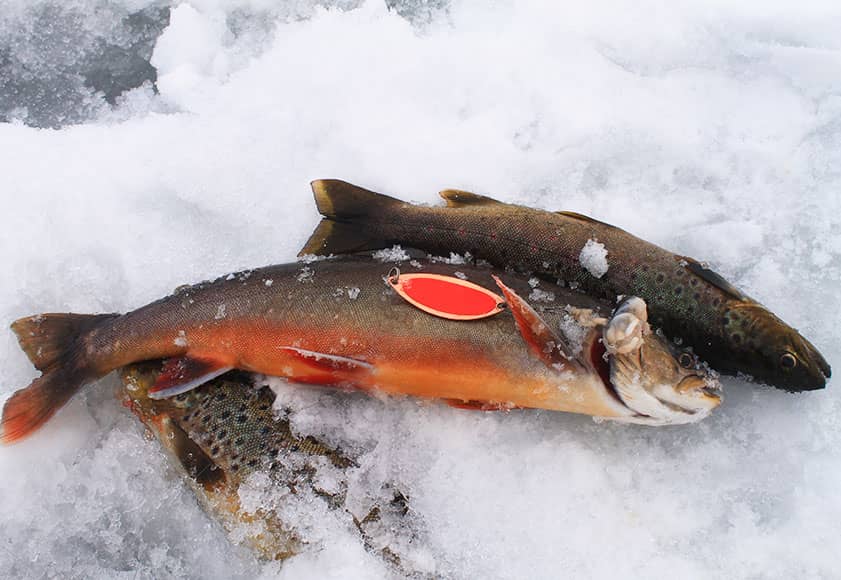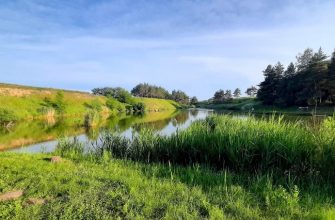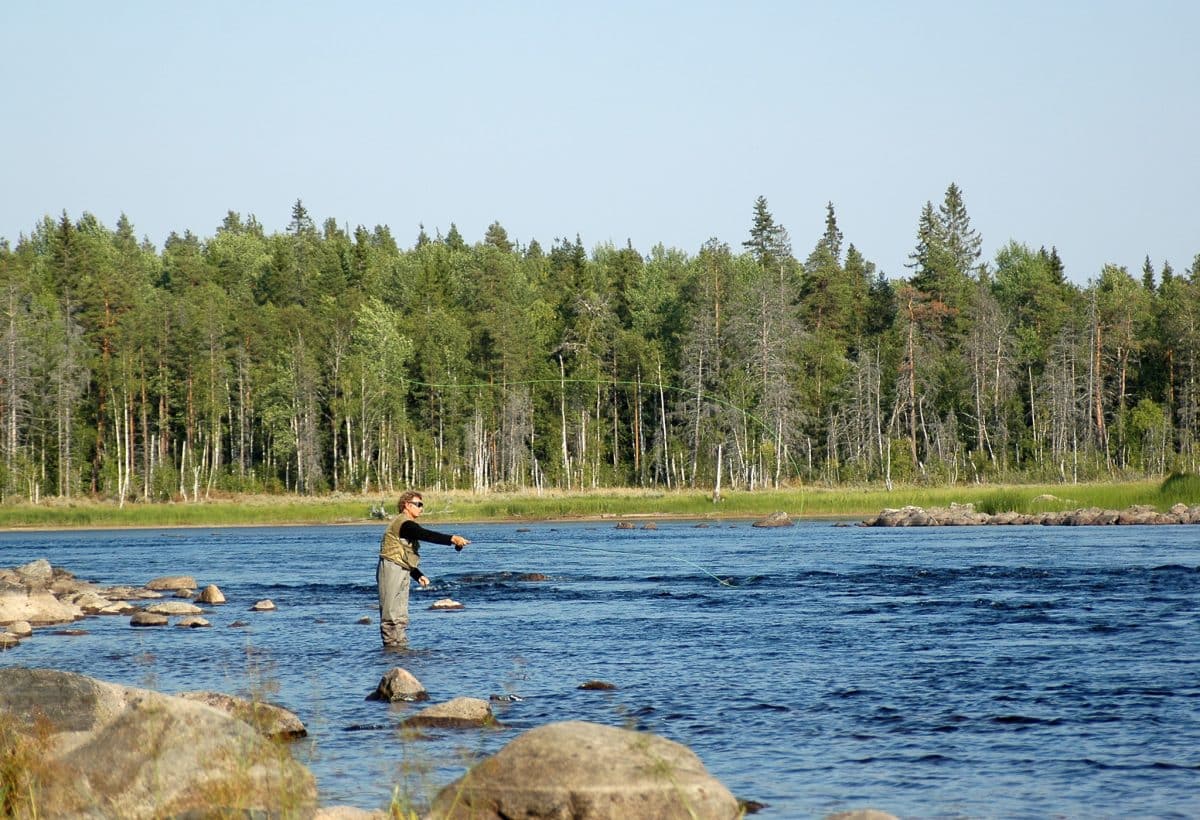The Kola Peninsula has long attracted fishermen not only from Russia, but also from other countries. Such unique fishing, which can be obtained in the various waters of this region, cannot be found anywhere else.
- Geographical features of the Kola Peninsula – where is it located on the map
- Ichthyofauna of the Kola Peninsula, which is famous among fishermen
- Salmon
- Pink salmon
- Brook trout
- Lake brown trout
- Sea trout
- Arctic char
- Palia
- Grayling
- Whitefish
- Vendace
- Smelt
- Perches
- Carp
- Shchukovye
- Cod
- Recreational fishing rules on the Kola Peninsula
- Where to fish on the Kola Peninsula – rivers and lakes
- The rivers
- Umba
- Ponoy
- Varzuga
- Kovda
- Cola
- Oriental Face
- Teriberka
- Crow
- Yokanga
- Lakes
- Imandra
- Umbozero
- Lovozero
- Seidozero
- Reservoirs
- Kovdozerskoe
- Verkhnetulomskoe
- Licensed fishing on the Kola Peninsula
- Fishing tackle on the Kola Peninsula
- Winter fishing on the Kola Peninsula
- Fishing tourism on the Kola Peninsula
- Fishing bases on the Kola Peninsula
- Useful Tips
- Fishing reports in real time
- Поделиться ссылкой:
Geographical features of the Kola Peninsula – where is it located on the map
Almost the entire territory of the Kola Peninsula is located beyond 66 degrees north latitude, i.e. beyond the Arctic Circle. Most of the region is occupied by the Murmansk region, bordering Norway and Finland. From the south, the Kola Sea washes the White Sea, from the north – the Barents Sea. The natural landscapes of the peninsula are represented by tundra, taiga and mountain ranges. Due to the geographical position on the Kola, during the year, the polar summer is replaced by the polar winter. Kola Peninsula on the online fishing map:
Ichthyofauna of the Kola Peninsula, which is famous among fishermen
In quantitative terms, the Kola fish fauna can be assessed as rather poor, even in comparison with neighboring Karelia. https://tytkleva.net/rybolovnye-mesta/luchshie-mesta-dlya-rybalki-v-karelii.htm Freshwater fish fauna is represented by the following fish species.
Salmon
Atlantic salmon or salmon is an anadromous fish. It spawns in rivers, the fry hatched from the eggs spend some time in fresh water, and then slide into the sea, where they fatten and reach maturity. For spawning, they return to the same places where they were born. There are several breeding periods in the life cycle of a salmon.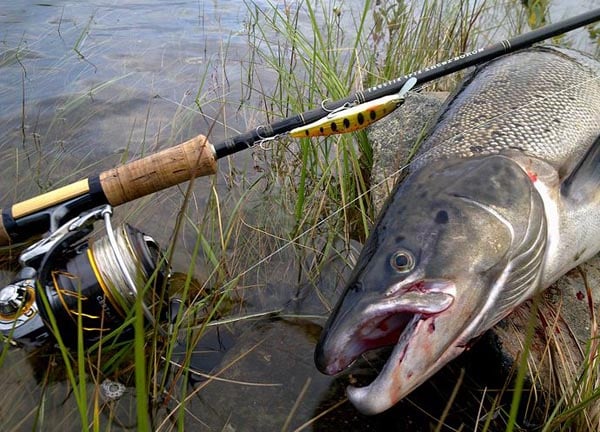
Pink salmon
This fish lives in the Far East, but as a result of successful acclimatization, it began to be found in large numbers both in the White Sea and in a much smaller one in the Barents Sea. In some places, it is a food competitor to salmon. Pink salmon live only two years. After feeding at sea, she returns to the river where she was born. After the reproduction process, pink salmon dies.
Brook trout
Occurs in rivers and streams of the Kola Peninsula, where it can reach considerable size.
Lake brown trout
The same species as brook trout, although with some morphological differences. As a result of feeding in large lakes, where there is much more food than in rivers, it grows to trophy sizes. Spawning takes place in the same places where the fish were born.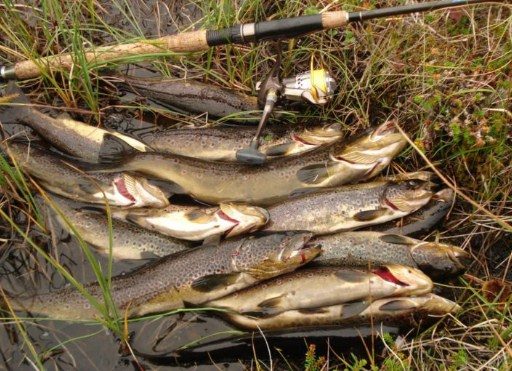
Sea trout
The same trout, but leaving for feeding in the sea. It can also reach significant sizes.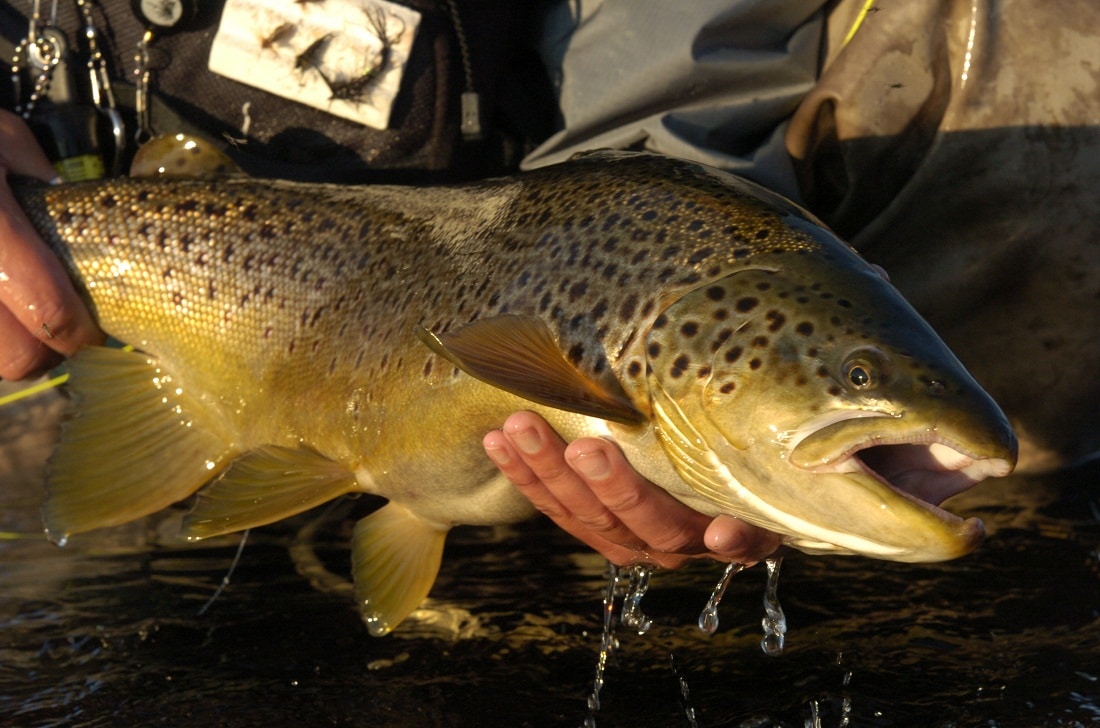
Arctic char
Inhabits the tundra lakes of the peninsula, sometimes being the only representative of the ichthyofauna, or adjacent to the brown trout, which does not grow to gigantic proportions in closed water bodies. 
) [/ caption]
Palia
Fish from the genus loach. Lives in deep lakes.
Grayling
This beautiful and lively fish lives both in the rivers and in the lakes of the Kola Peninsula. Grayling weighing 1.5 kg is far from uncommon.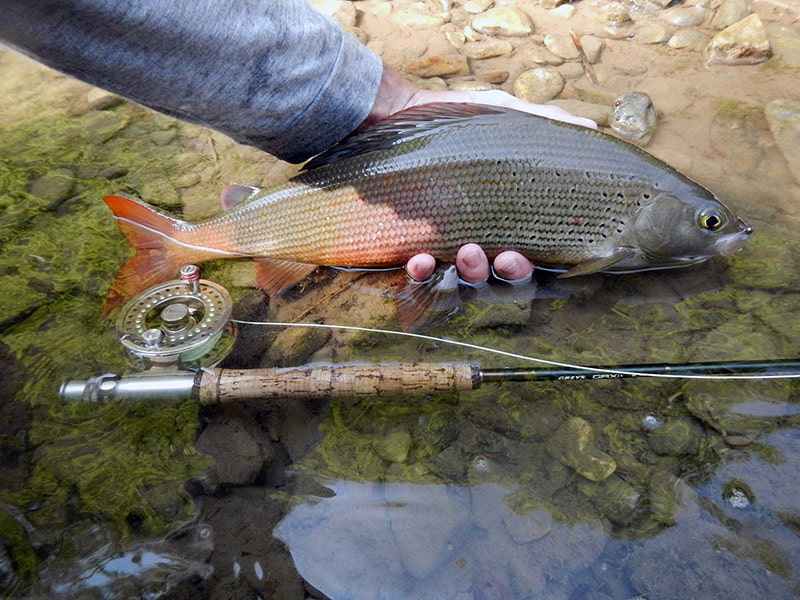
Whitefish
Kola is inhabited by several species of whitefishes, the classification of which is difficult even for ichthyologists. Whitefish are found in both fresh and sea water.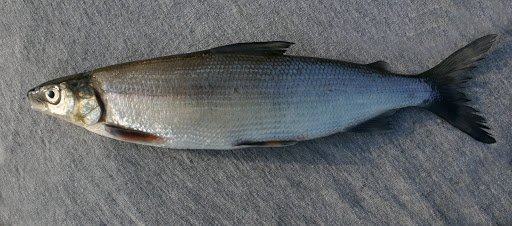
Vendace
Fish of commercial importance. The vendace populations reach high numbers in large lakes. The meat of this fish is very fatty and all predatory inhabitants of reservoirs feed on it.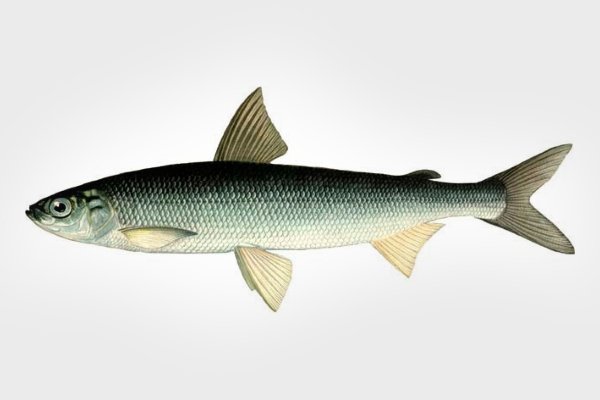
Interesting fact! The meat of the pike, which feeds mainly on vendace, is pink, like that of salmonids.
Smelt
In fresh water bodies of the Kola smelt, there are not many, although large schools of this fish can be found in strongly freshened bays of the seas.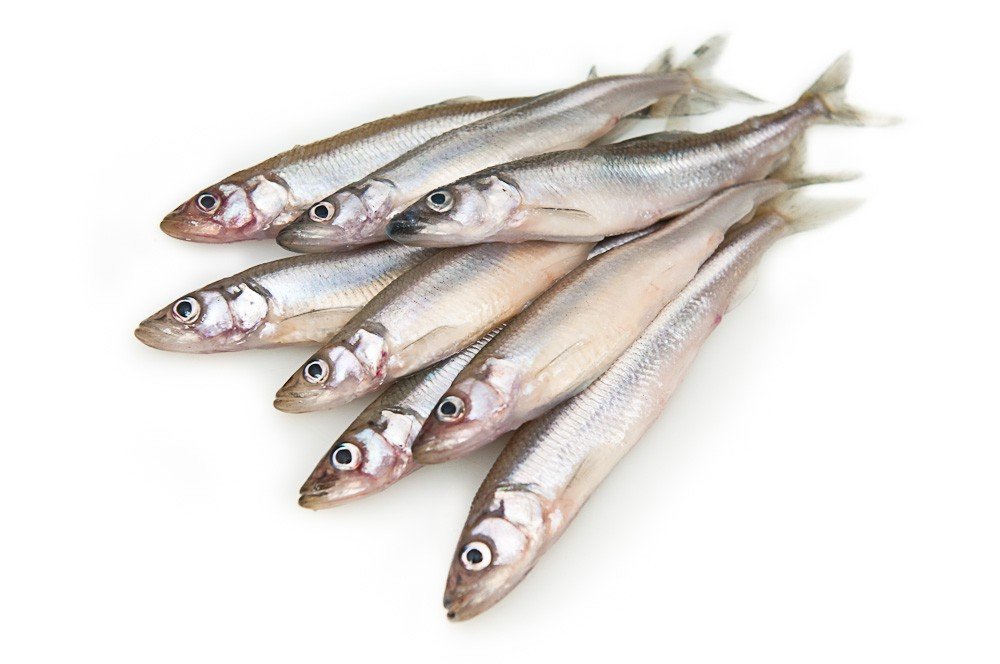
Perches
Meet:
- perch. The striped robber is found in the rivers and lakes of the peninsula;
- ruff.
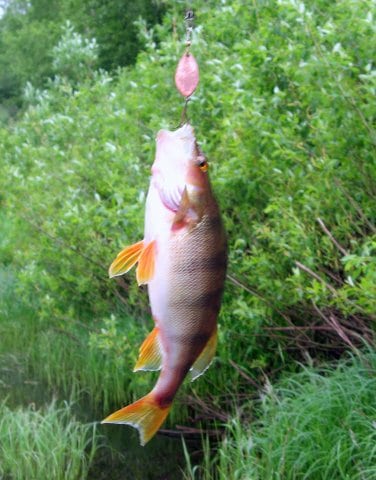
Carp
On the Kola Peninsula there are:
- roach;
- ide;
- minnow.
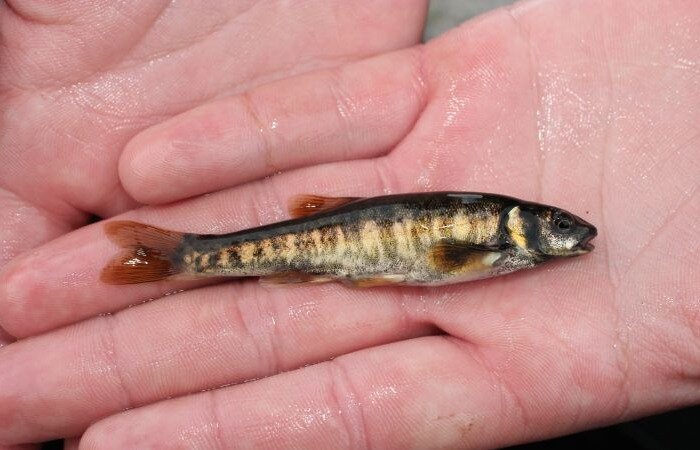
Shchukovye
Pike.
Cod
Burbot.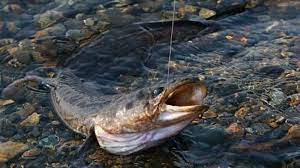
Recreational fishing rules on the Kola Peninsula
First of all, it should be remembered that fishing for salmon and pink salmon is carried out only under licenses and in certain areas.
Other fish can be caught for free, observing the existing rules, namely, not exceeding the size of the permitted daily catch and releasing fish that have not reached the length regulated by the law. The daily norms for different types of fish are shown below:
- trout, brown trout – 10 kg;
- char – 10 kg;
- whitefish – 10 kg;
- pike – 15 kg;
- all other types of fish – 15 kg each.
The minimum size of fish allowed for removal is:
- for trout, brown trout, char, char – 30 cm;
- for smelt – 14 cm;
- for vendace – 12 cm;
- for whitefish – 25 cm;
- for grayling – 20 cm;
- for pike – 38 cm.
Attention! It is prohibited to catch juveniles of salmon that have not rolled into the sea. Some anglers take it under the pretext that it is a trout, although these fish have significant morphological differences.
There are no strict spawning bans on Kola. They apply to individual species in a limited number of water bodies.
Where to fish on the Kola Peninsula – rivers and lakes
Fishing on Kola is varied. You can catch a wide variety of fish in different ways, not only in summer, but also in winter.
The rivers
Many fishermen go to Kola for red fish – Atlantic salmon. Salmon lives in rivers flowing into both the White and the Barents Sea. The first ones have a greater length and a smaller slope, although there are enough rapids for them. Salmon in these rivers is smaller. The rivers in the Barents Sea basin are shorter, but the fish are larger. The most popular rivers on the Kola Peninsula are as follows:
Umba
The river is the easiest to get to, so there are always a lot of anglers here. It flows into the White Sea. The length is 123 km. The main tributaries are the Voronya, Chernaya, and Khariusnaya rivers, where salmon, pink salmon and brown trout also enter. In order to approach the river during the running season of pink salmon and make a cast, sometimes you have to stand in line. Fishing is strictly licensed.
Ponoy
The largest river on the Kola Peninsula. Its length is 391 km. There are many rapids on the river. Salmon is larger here than in other rivers of the White Sea basin. Pink salmon comes in every two years;
Varzuga
It flows into the White Sea. The length of the river is 254 km. It is also very popular among Russian anglers, but not as popular as Umba. In addition to salmon, they catch pink salmon. Of the fish that can be caught without a license, grayling and trout are numerous in Umba.
Kovda
Most of the river is located in Karelia, the lower reaches – in the Murmansk region. It flows into the White Sea. The river is rich in all kinds of fish: whitefish, ide, burbot, pike, roach, but it is difficult to get to it. The length of the river is 233 km.
Cola
The nearest river to Murmansk. Its length is 83 km. Although the river flows mainly through populated areas, it is believed that the largest salmon enters it. It flows into the Kola Bay of the Barents Sea.
Oriental Face
It flows out of Lake Litsa and flows into the Barents Sea. Length – 118 km. It is famous for its large salmon.
Teriberka
Belongs to the Barents Sea basin. Length – 127 km. It is known for the visits of large salmon.
Crow
It flows into the Barents Sea. The length of the river is 155 km. Its bed is replete with rapids and waterfalls. Popular with fly-fishing salmon.
Yokanga
Belongs to the Barents Sea basin. Length 204 km. Besides the traditional salmon, the river is rich in brown trout, whitefish, grayling and pike.
Almost all salmon rivers have equipped camps for licensed salmon fishing.
Curious! Unlike the White Sea, pink salmon did not take root in the Barents Sea. Single copies come across. Recently, attempts have been made to acclimatize steelhead salmon, an anadromous form of rainbow trout.
Fishing on the Varzuga River on the Kola Peninsula – the latest 2021 report: https://youtu.be/bzoqw3XYjJM
Lakes
Lakes where you can fish on the Kola Peninsula.
Imandra
The largest lake is Kola, with an area of 876 km2. In the reservoir there are many whitefish, grayling, vendace, pike, perch, burbot, ide and brown trout can be found.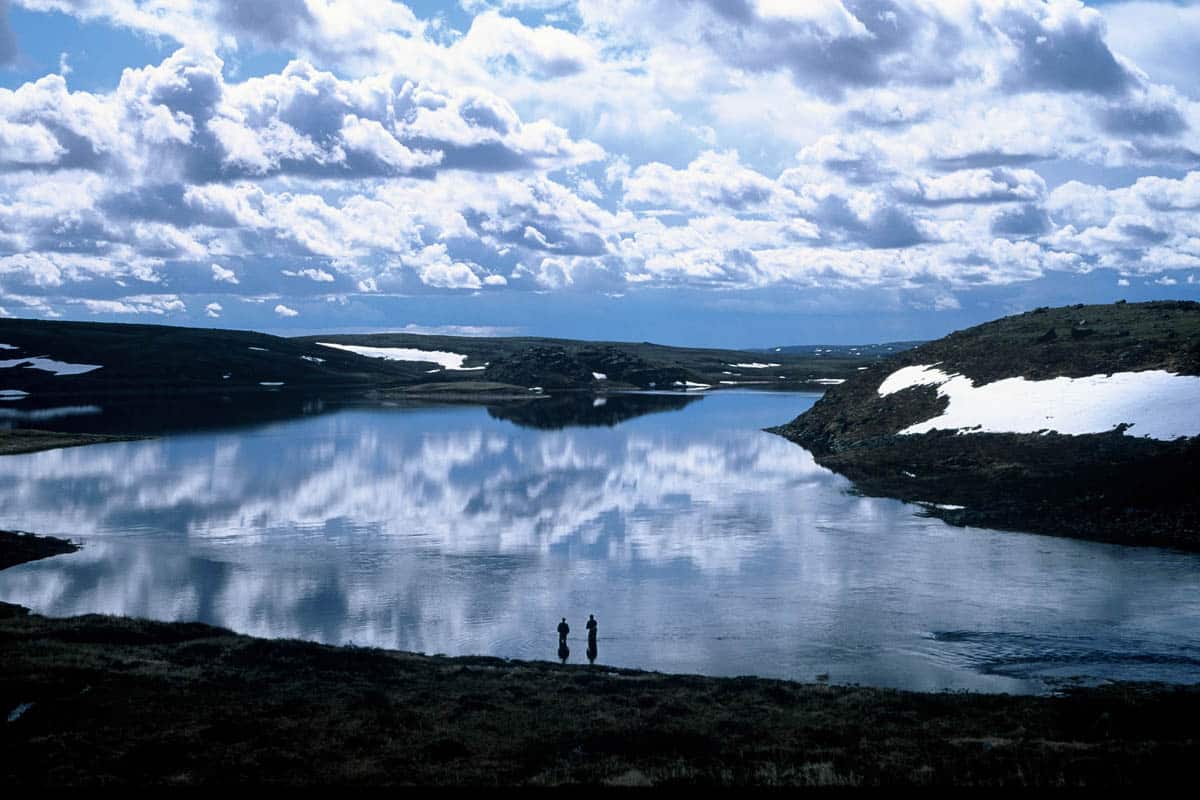
Umbozero
The deepest lake is Kola, with depths up to 115 m. The area is 422 km2. The lake is rich in whitefish, vendace, burbot. With a little persistence, you can catch palia and trout.
Lovozero
Located in the center of Kola. The water area is 208 km2. There are many large perch and pike in the lake. There are brown trout, whitefish, grayling and char.
Seidozero
The reservoir belongs to large tundra lakes. The depths are relatively shallow, the waters are exceptionally clear. There are a lot of fish in the lake. In addition to valuable breeds such as whitefish, grayling, brown trout and char, you can most likely catch trophy pike and perch.
Reservoirs
The best reservoirs of Kola, where you can fish.
Kovdozerskoe
Formed when the Kovda River was blocked. The length of the reservoir is 60 km, the maximum width is 38 km. The ichthyofauna of the lake is diverse. The angler can fish for trout, whitefish, grayling, pike, burbot and roach.
Verkhnetulomskoe
It was formed as a result of the construction of the Verkhnetulomskaya hydroelectric power station. It is 80 km long, 20 km wide with an average depth of 15 m. The lake is inhabited by whitefish, vendace, brown trout, smelt, perch, pike, and burbot.
A real photo report from fishing on the Kola Peninsula on the Verkhnetulomsky reservoir in the fall of 2021 is below. The banks of the reservoir are rocky, overgrown with forest. It is possible to fish from the shore, but from a boat it is preferable.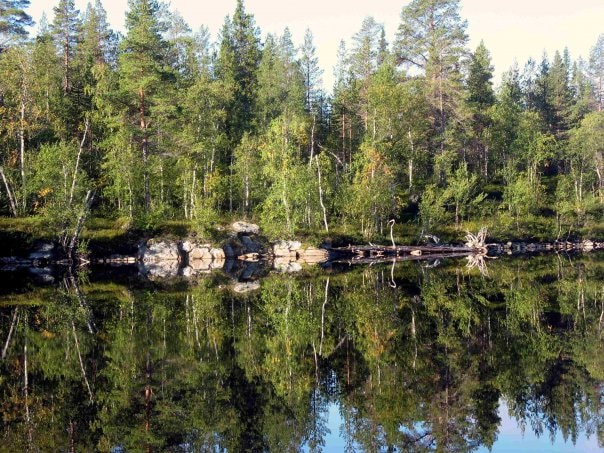 The shores of the reservoir are rocky, overgrown with forest [/ caption] There is a lot of perch, it can be caught both on the path and by throwing it. In summer, a wobbler can be considered the best bait, with a cold snap, lures with which you can use jig wiring (front-loaded turntables, Castmasters, silicone on a jig head) gain advantage.
The shores of the reservoir are rocky, overgrown with forest [/ caption] There is a lot of perch, it can be caught both on the path and by throwing it. In summer, a wobbler can be considered the best bait, with a cold snap, lures with which you can use jig wiring (front-loaded turntables, Castmasters, silicone on a jig head) gain advantage.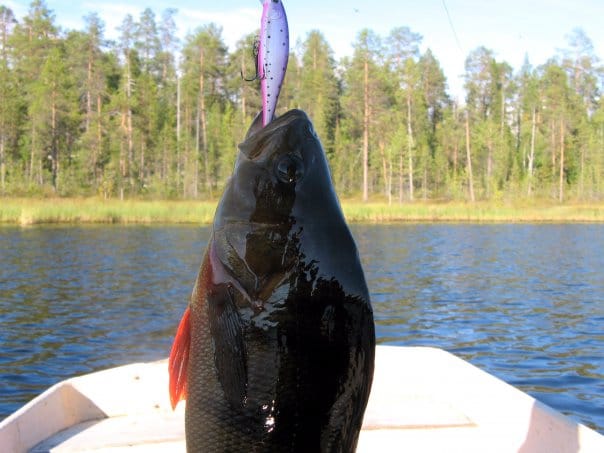 Perch goes to wobblers [/ caption] Often come across pikes, which in warm weather are perfectly caught with wobblers and topswaters, and closer to cold weather they prefer oscillators. The
Perch goes to wobblers [/ caption] Often come across pikes, which in warm weather are perfectly caught with wobblers and topswaters, and closer to cold weather they prefer oscillators. The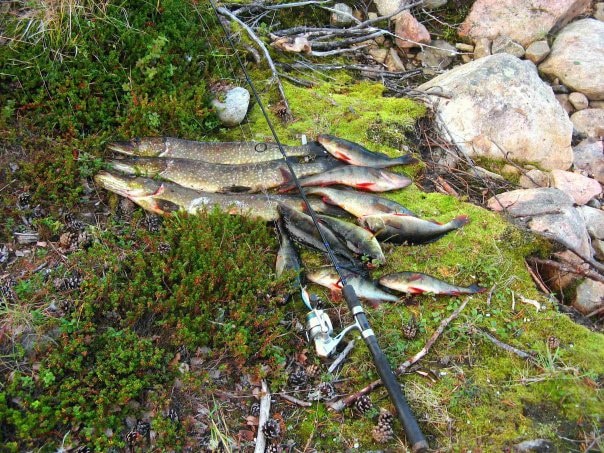 pike goes to jig and jig [/ caption] A lot of small rivers, rich in different fish, flow into the reservoir. Grayling can reach trophy sizes, and there are a lot of medium-sized ones.
pike goes to jig and jig [/ caption] A lot of small rivers, rich in different fish, flow into the reservoir. Grayling can reach trophy sizes, and there are a lot of medium-sized ones.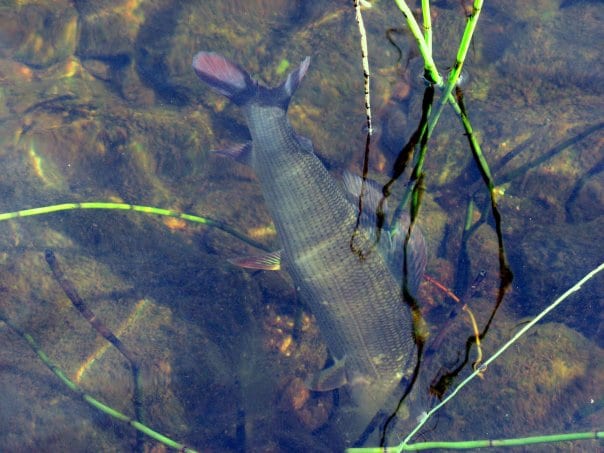 There are a lot of grayling [/ caption] In some rivers only brook trout is found, there are such specimens that a fisherman from more southern regions can only dream of.
There are a lot of grayling [/ caption] In some rivers only brook trout is found, there are such specimens that a fisherman from more southern regions can only dream of.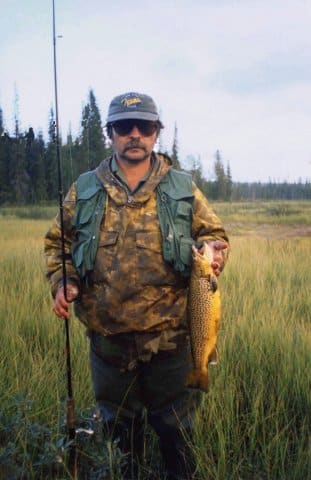 Brown trout [/ caption] Towards autumn, brown trout enter some rivers. Spinning this fish is a pleasure.
Brown trout [/ caption] Towards autumn, brown trout enter some rivers. Spinning this fish is a pleasure.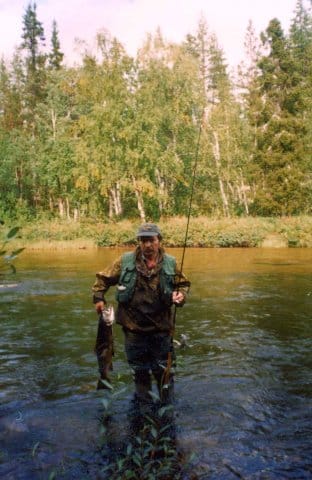 Spinning fishing [/ caption] It is interesting that on the Kola Peninsula, fish can be found even in the smallest reservoir, including the stagnant one. Some are chock-full of small “sailors”, while in others there are decent-sized perches and pikes.
Spinning fishing [/ caption] It is interesting that on the Kola Peninsula, fish can be found even in the smallest reservoir, including the stagnant one. Some are chock-full of small “sailors”, while in others there are decent-sized perches and pikes.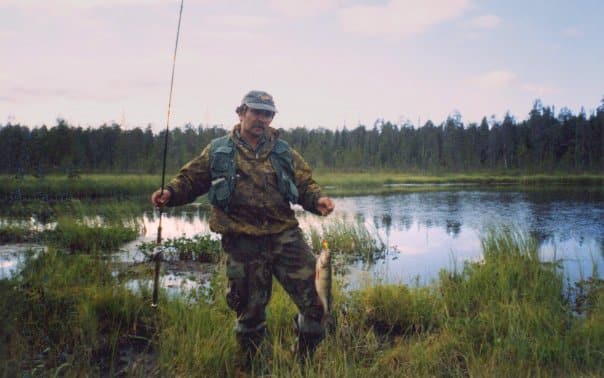
Licensed fishing on the Kola Peninsula
Fishing for salmon and pink salmon in Kola is allowed only under a license. Fishing without proper documents is fraught with serious consequences. Fish inspections and riot police are regularly raided.
Attention! On different rivers, there are different periods of permitted fishing and permitted fishing methods.
Upon presentation of a passport, a registered license for a specific fishing area is issued. You can write it out at the fish inspection point. The document specifies the fishing method. If fishing is carried out on a catch-and-release basis, the hooks should be beardless and no more than double hooks. The fish you catch should be handled with care. The license must include information about the fish caught and released. It is forbidden to fish for salmon by trolling and from an unmoored boat. The cost of the license is: Fishing with the removal of fish (you can catch one in 6 hours):
- for citizens of other countries – 2700 rubles;
- for citizens of the Russian Federation and the Customs Union – 450 rubles;
- for residents of the Murmansk region – 350 rubles;
- for pensioners – 250 rubles;
- for participants of the Second World War and children under 14 years old (in the presence of adults) – free of charge.
Fishing according to the “catch and release” principle (you can catch 2 fish in 12 hours):
- for citizens of other countries – 3.6 thousand rubles;
- for citizens of the Russian Federation and the Customs Union – 1.8 thousand rubles;
- for residents of the Murmansk region – 1.6 thousand rubles.
A daily license for catching pink salmon costs 2 thousand rubles. Can catch and retrieve 18 specimens. Salmon, like pink salmon, is caught in the following places:
- on the rapids, above and below the thresholds;
- under the waterfalls;
- in pits;
- behind separate large stones;
- on girders – flat areas with a fast current;
- in places with reverse flow.

Fishing tackle on the Kola Peninsula
It makes no sense to go to Kola with a feeder. You can fish grayling, whitefish, trout, perch and roach on the float. Still, the main fishing methods in this region are spinning and fly fishing. The spinning tackle is selected taking into account the type of fish to be caught and in accordance with the fishing conditions. To catch salmon, you will need a rod 2.7-3.3 meters long with an upper test for lures of at least 35 grams. The power of the spinning rod largely depends on which fishing method will be used. So for fishing with traditional baits (spoons, wobblers) a heavy rod is not required.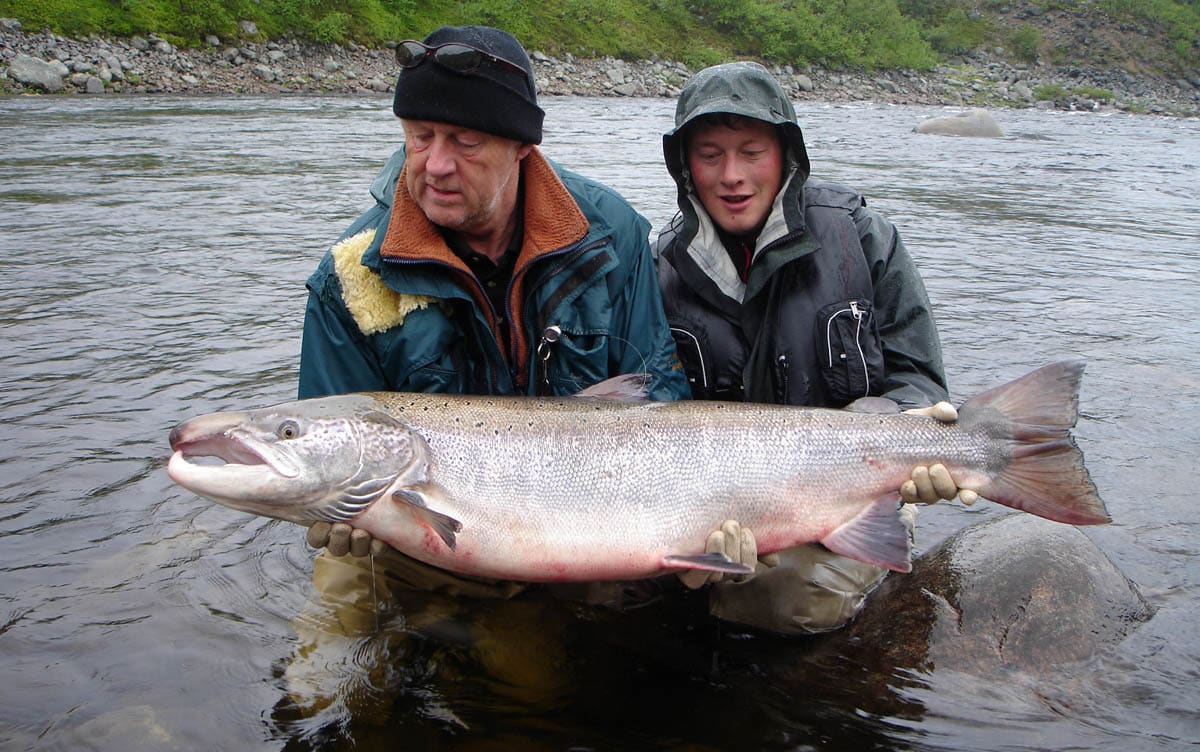
. What to fish for, braid or monofilament, the angler decides for himself. Artificial flies show themselves to be the most effective baits, of which there are at least a hundred species just for catching salmon. The result of fishing depends on the correct choice of the fly. In addition to catching “on the run”, catching with a bombard can be effective.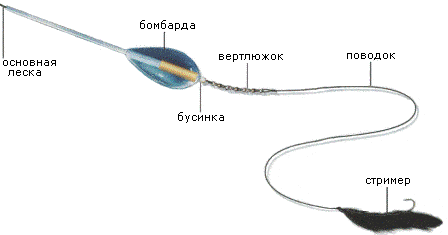
- trout and trout can be successfully caught on small spoons, turntables No. 1-3, and small wobblers;
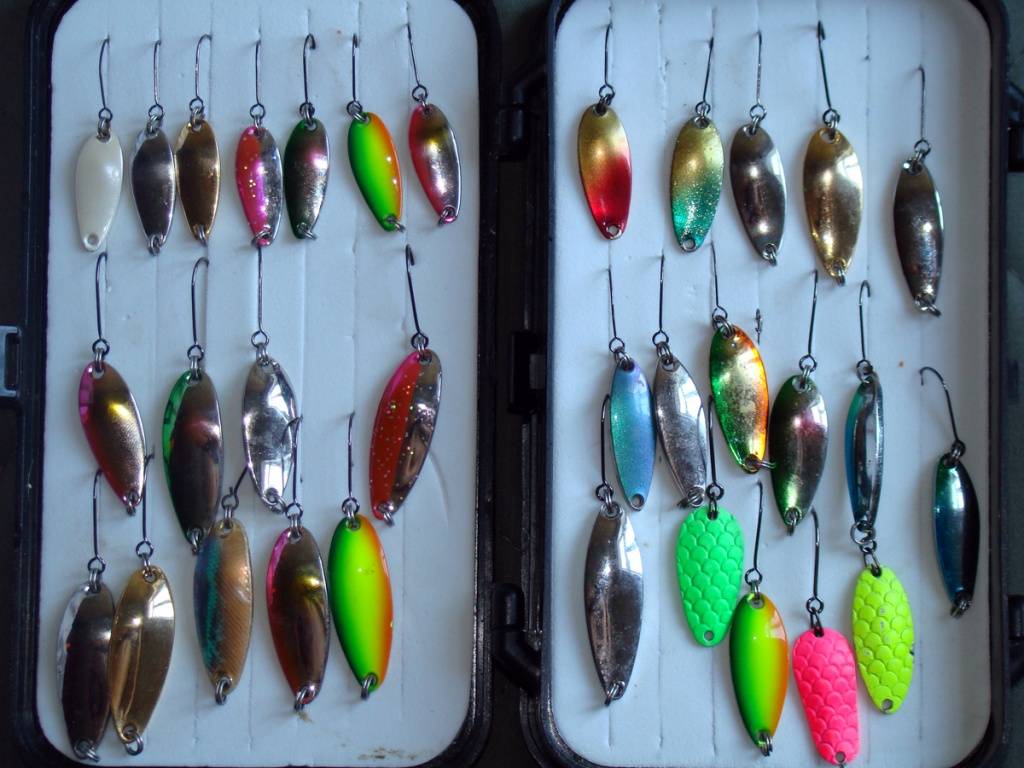
- grayling prefers medium-sized turntables and the smallest wobblers;
- Whitefish can also bite on spoons, but it is most effective to catch it with artificial flies with a bombard. The same goes for passive grayling. Well-fed brown trout and trout are also more likely to react to a fly, but they can be tied on a short leash in front of a spinner.
Familiar perch and pike are caught with the same tackle, using the same fishing methods as in other places.
Important! When fishing for any fish on the Kola Peninsula, the Castmaster proved to be excellent, of course the original American, not the Chinese fake. Trout and brown trout peck at it on a uniform lead, grayling – on a stepped one, and pike and perch on any. You need to have several spinners of different weights – from 3.5 to 21 grams.
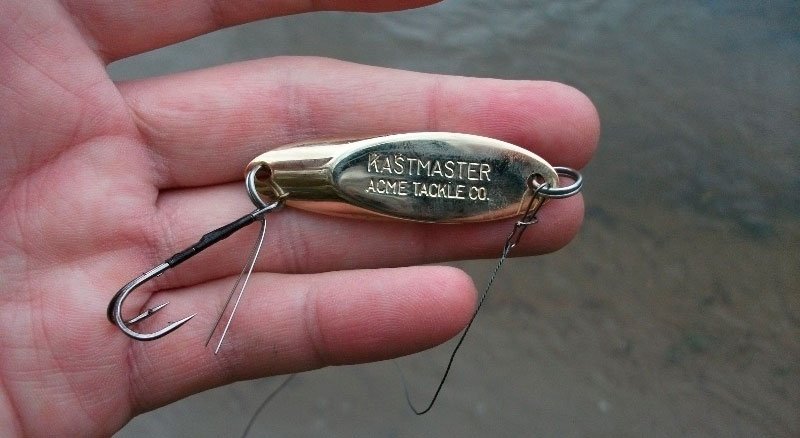
Winter fishing on the Kola Peninsula
Winter fishing on Kola is no less interesting than summer fishing. There are only two problems: the polar night and the inability to reach catchy places without a snowmobile. The most popular among anglers are trips to tundra lakes for char and trout. In addition, fishing for whitefish and perch from ice is widespread. On the lakes, they successfully catch pike on girders and burbot on donks. In almost all bodies of water, you can count on catching a trophy. Winter fishing usually starts in March, when the length of daylight hours increases. Winter fishing on the Kola Peninsula – video report on the fishing season 2021: https://youtu.be/upkyZnSxJCE
Fishing tourism on the Kola Peninsula
Fishing tourism on Kola is widespread as nowhere else in Russia. Fishing tourism refers to fishing tours and fishing in angler camps. Most of the summer fishing tours are for salmon fishing. Prices vary widely – they are mainly determined by the delivery method. It is clear that helicopter flights to deserted rivers are much more expensive (80 thousand rubles per hour) than river rafting or car travel. Snowmobiling in winter is also not cheap. In the camps, everything is usually arranged so that the client is satisfied not only with fishing, but also with the quality of service. Fishing guides are available everywhere.
Currently, companies organizing tours and camps are suffering losses due to the covid-19 pandemic, since foreign fishermen cannot get to Russia.
Fishing bases on the Kola Peninsula
There are many fishing bases on Kola. If desired, the angler can choose the one that he can afford. You can name the following:
- Varzugatur . 324 km from Murmansk. The main fishing is licensed salmon and pink salmon, although other fish can be caught for free. Cost from 12 thousand rubles / day;
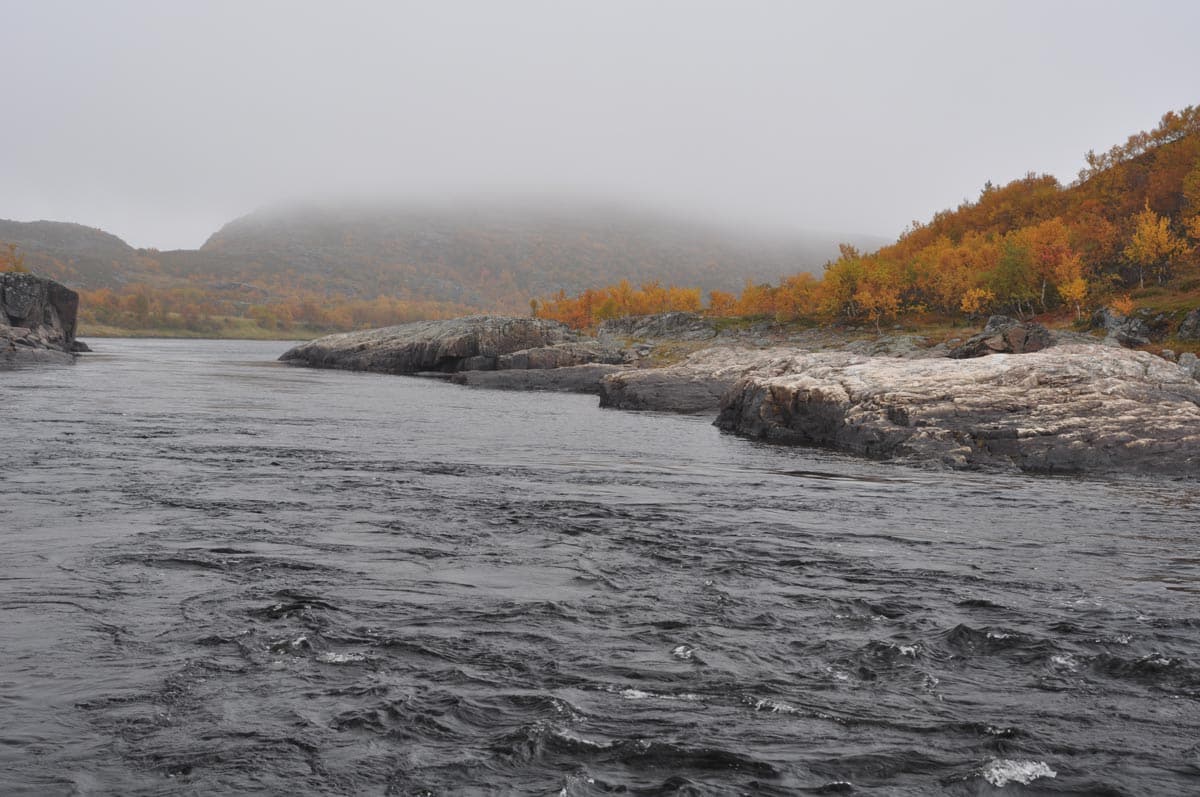
- Nordseaman . The base specializes in sea fishing, but trips to the lakes are available for lovers of freshwater fishing. Price – from 1.5 thousand rubles / day;
- Bearish angle . The base on Lovozero, 160 km from Murmansk. Works all year round. There is an opportunity to fish for trout, grayling, whitefish, perch, pike, burbot. The cost of living is from 6 thousand rubles / day;
- Near Seydozero . Despite the name, the base is located on the banks of Lovozero. There is an opportunity to fish for any fish living in the reservoir, both in summer and in winter. Prices start at 1.6 thousand rubles / day;
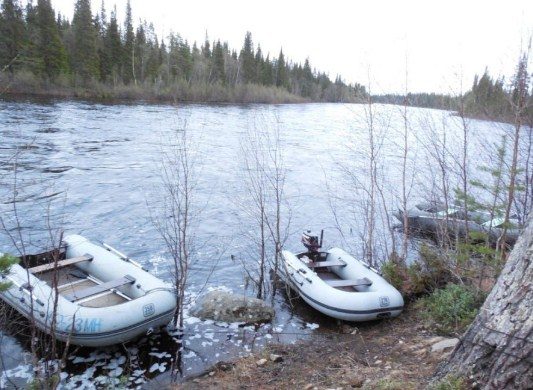
- Berth 45 . The base is in the village of Teriberka, 87 km from Murmansk. Fishing on the river with or without a license, the kind of fish that can be caught for free. Of interest to hunters. Cost from 2.5 thousand rubles / day;
- Woowa . It is located on the banks of the river of the same name, not far from the Lapalandsky nature reserve. Here you can catch trout, brown trout, grayling and pike. Price – from 5.4 thousand rubles / day;
- Green coast . A comfortable base located on the bank of the Verkhnetulomsky reservoir. Full range of services. Fishing in summer and winter. There is an opportunity to catch whitefish, grayling, perch, pike. Cost from 9 thousand rubles / day;
- Russian Lapland . Base on the island Vysokiy on Lovozero. There is everything for active recreation. Fishing is available throughout the year. Price – from 1.3 thousand rubles / day;
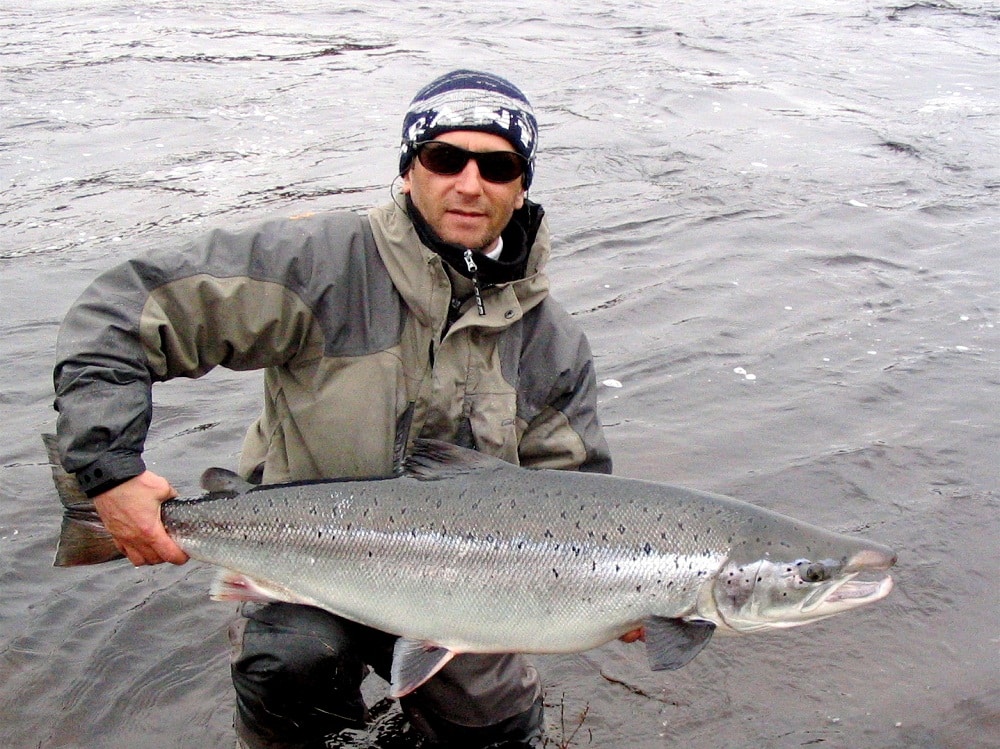
- Satka . The base is located just 47 km from Murmansk on the banks of the Tuloma River. You cannot count on a significant catch, but the cost of living is only 850 rubles;
- Typanovka . Located on the bank of the river of the same name. It is possible to fish for salmon and pink salmon under license, for trout without it, as well as for fish in the Barents Sea. Price – from 2.6 thousand rubles per day;
- Yulinskaya Salma . Despite the low cost of living (from 990 rubles / day), the base has everything for a comfortable stay and effective fishing. Located on the banks of Lovozero.
Fishing on the Kola Peninsula, season 2021-2022 is open – video report on the first ice: https://youtu.be/GnLqaCwbeqE
Useful Tips
Fishermen going to the Kola Peninsula should know the following:
- in the summer, you need to take effective repellents with you, otherwise the gnat can eat it alive. The midge is especially scary, for which there are just clouds, but mosquitoes with a biting midge will not let you get bored;
- it is better to make the first trip not as a savage, but to go to some fishing camp or to a base;
- warm clothes will not be superfluous either in summer or in winter;
- you need to take a large supply of baits with you. If they run out, you will have to buy them from the locals at exorbitant prices.
Fishing reports in real time
Fishing reports on Kola can be found on the following sites http://murman-fishing.ru/forum/viewforum.php?f=2, https://www.rusfishing.ru/forum/, http: // rybalka-v .ru / articles / murmanskaya-oblast / etc. A video about fishing on the Kola Peninsula is also available for our readers: https://www.youtube.com/watch?v=w_DpcvKwiu8&ab_channel=RybakisKolsky Fishing for trout on the Kola Peninsula: https: // www.youtube.com/watch?v=InPpnH_0qnQ&ab_channel= Mustache ant https://www.youtube.com/watch?v=-MRuGTDpso4&ab_channel=DENDRA.RUSSIA The Kola Peninsula is still a fishing paradise, although every year more and more damage. Treat her with care and respect.
